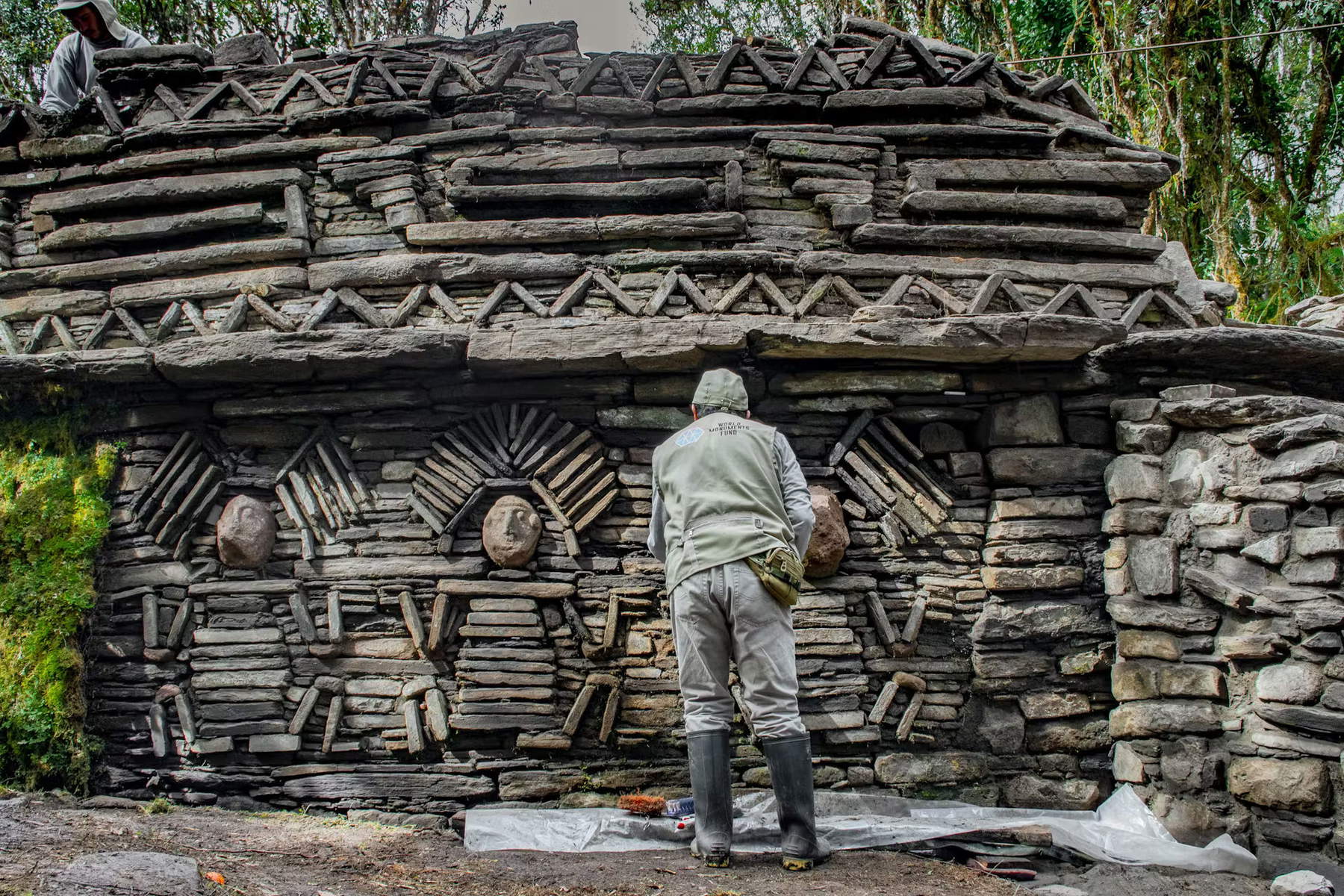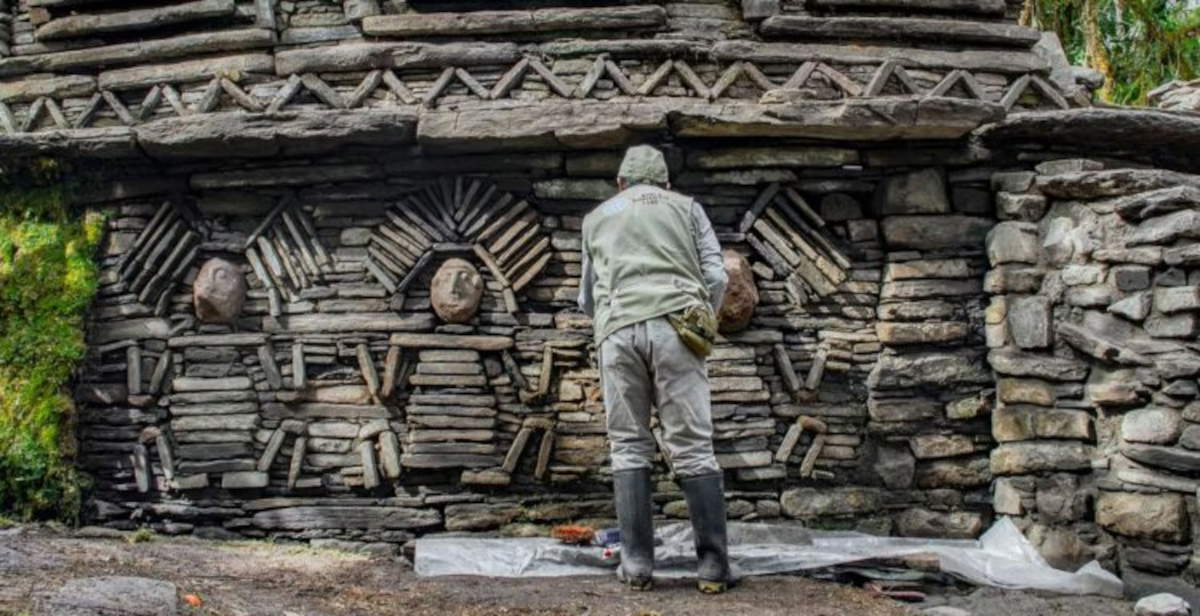A new archaeological discovery has taken place in northeastern Peru, within the Río Abiseo National Park, a UNESCO World Heritage Site. The World Monuments Fund (WMF) announced the identification of more than 100 previously unknown structures at the site of Gran Pajatén, one of the most important complexes of the Chachapoya civilization. Until now, there were 26 known structures at the site, first recorded in the 1980s. The new evidence, obtained through advanced technology and research conducted between 2022 and 2024, offers a broader understanding of the settlement organization, architecture and territorial influence of the civilization that inhabited the region between the 7th and 16th centuries. Gran Pajatén is located in the San Martín region, in a mountainous area covered by dense cloud forest vegetation. The site, discovered in the 1960s, is notable for the presence of ceremonial buildings decorated with stone mosaics and relief friezes depicting human figures. However, until now, much of its extent remained unknown due to the dense vegetation cover. The new study conducted by the WMF in collaboration with Peruvian and international researchers has revealed the existence of a much larger settlement, whose function and articulation are beginning to be delineated more precisely.
“This discovery radically expands our understanding of Gran Pajatén and raises new questions about the site’s role in the Chachapoya world. The evidence now confirms that it is not an isolated complex, but part of an articulated network of pre-Hispanic settlements from different periods,” said Juan Pablo de la Puente Brunke, WMF’s executive director in Peru.
“What makes this moment so significant is not just the scope of what was discovered, but how we were able to do it,” said Bénédicte de Montlaur, president and CEO of the World Monuments Fund. “Using advanced technology, our team was able to collect an extraordinary visual and scientific record that brings Gran Pajatén to life, all while preserving its delicate environment. Although the site itself remains out of reach for most, these tools will allow us to share its stories widely through thoughtful and engaging digital storytelling.”
The Chachapoya civilization, also known as “the cloud forest people” or “rainforest people,” developed between 2,000 and 3,000 meters above sea level along the slopes of the northeastern Andes.

The communities were organized into regional chiefdoms but shared a distinctive architectural and artistic style, visible in the circular structures, geometric friezes, and ornate tombs built along the cliff walls. Despite resistance to Inca expansion, the Chachapoya were eventually incorporated into the empire in the late 15th century, just before the arrival of the Spanish. The new discoveries are the result of a multidisciplinary research campaign sponsored by the WMF in Peru, which integrated field exploration, archaeological excavations, conservation work and technological documentation. For the first time, detailed mapping of the entire Gran Pajatén complex was carried out using high-precision tools such as airborne and hand-held LiDAR, photogrammetry, topographic recording, and technomorphological analysis. These techniques made it possible to “see” through the vegetation cover without altering the integrity of the natural environment or damaging the architectural remains.
According to stratigraphic analyses conducted at the site, the Chachapoya presence at Gran Pajatén would date back to at least the 14th century, but there are indications of even earlier use. In parallel, the discovery of a network of pre-Hispanic roads connecting the complex to other sites in the region, including La Playa, Papayas, and Los Pinchudos, reinforces the hypothesis that Gran Pajatén was part of an articulated and hierarchically organized territory. In addition to mapping and archaeological survey, the project included targeted conservation work on one of the site’s central structures. Specialists carried out controlled logging, high-resolution digital documentation, and physical stabilization work. The latter included filling gaps between stones, reinforcing steps and decorative reliefs, and partially reconstructing the perimeter wall. To ensure compatibility with the original materials, a clay-based mixture was formulated to provide solidity without compromising the authenticity of the structures.
“This work constitutes a pioneering intervention that will serve as a model for future conservation efforts in the area,” says Ricardo Morales Gamarra, head of the conservation component of the project.
Despite the cultural importance of Gran Pajatén, tourist access to the site remains limited to protect the ecosystem of Río Abiseo National Park, which is characterized by high biodiversity and environmental vulnerability. Indeed, the fragility of the landscape imposes severe restrictions, making the contribution of non-invasive technologies even more essential for the study and enhancement of the heritage. To mark the achievements, the Museo de Arte de Lima (MALI) is hosting a free exhibition, open to the public from May 21 to June 18, which offers the public an opportunity to learn more about the Chachapoya culture and learn more about the WMF’s findings. The exhibit features visual materials, digital reconstructions and information about the research process and documents one of the most important advances in the study of pre-Columbian civilizations in the Andean area.
 |
| More than 100 new structures discovered at Gran Pajatén archaeological site in Peru |
Warning: the translation into English of the original Italian article was created using automatic tools. We undertake to review all articles, but we do not guarantee the total absence of inaccuracies in the translation due to the program. You can find the original by clicking on the ITA button. If you find any mistake,please contact us.